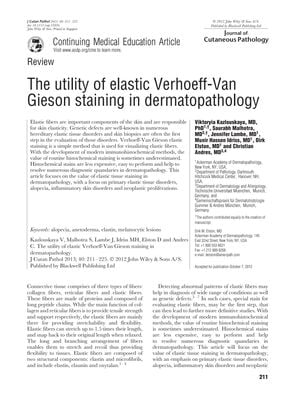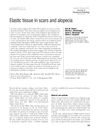The Utility of Elastic Verhoeff-Van Gieson Staining in Dermatopathology
December 2012
in “
Journal of Cutaneous Pathology
”
Verhoeff-Van Gieson staining elastic tissue disorders alopecia inflammatory skin disorders neoplastic proliferations elastic fibers papular elastorrhexis mid-dermal elastolysis pseudoxanthoma elasticum PXE elastofibroma dorsi fibrosing alopecias non-scarring alopecias benign neoplasms malignant neoplasms scar pattern tumor thickness melanomas EVG staining hair loss skin inflammation tumors scarring alopecias benign tumors malignant tumors

TLDR EVG staining is a valuable, simple, and cost-effective method for diagnosing various skin conditions in dermatopathology.
The document from 2012 highlights the significance of Verhoeff-Van Gieson (EVG) elastic staining in dermatopathology for diagnosing a variety of conditions, including elastic tissue disorders, alopecia, inflammatory skin disorders, and neoplastic proliferations. It emphasizes that EVG staining is a simple and cost-effective method that can reveal changes in elastic fibers, which are crucial for accurate diagnosis. The article details the application of EVG staining in identifying diseases with altered numbers or structure of elastic fibers, such as papular elastorrhexis, mid-dermal elastolysis, pseudoxanthoma elasticum (PXE), and elastofibroma dorsi. It also explains the role of EVG staining in differentiating between fibrosing and non-scarring alopecias, as well as benign and malignant neoplasms, by highlighting the 'scar pattern' in fibrosing alopecias and aiding in the assessment of tumor thickness in melanomas. The document concludes that EVG staining is a valuable tool in dermatopathology for providing diagnostic and prognostic information.

